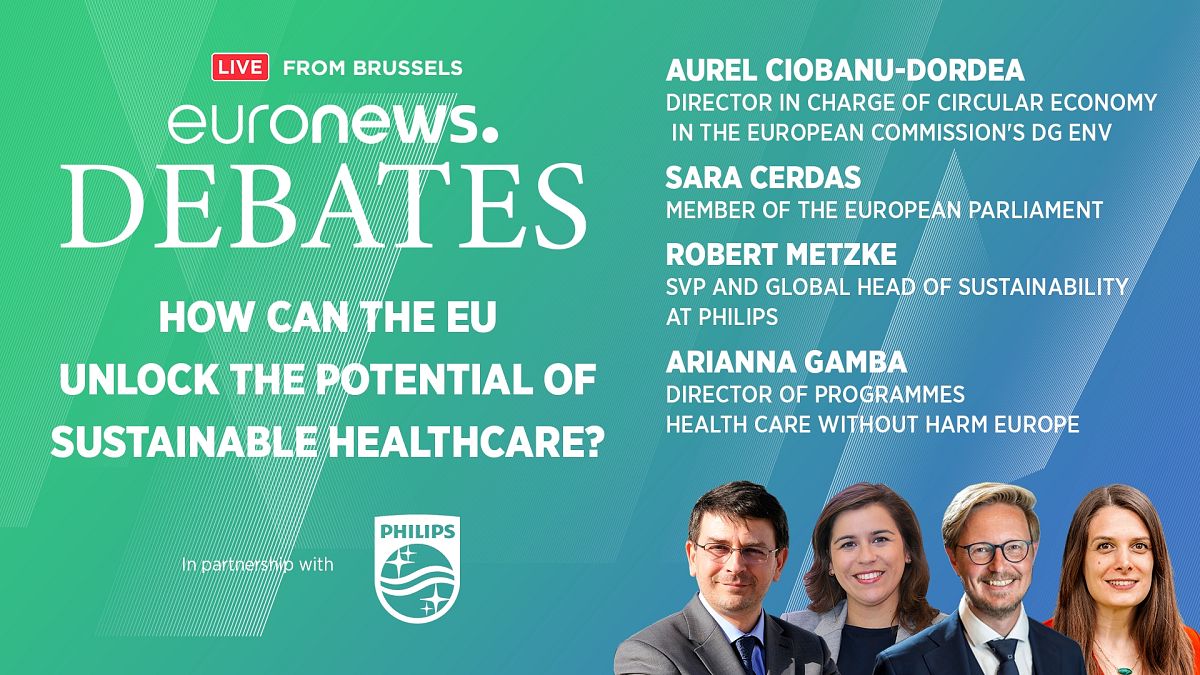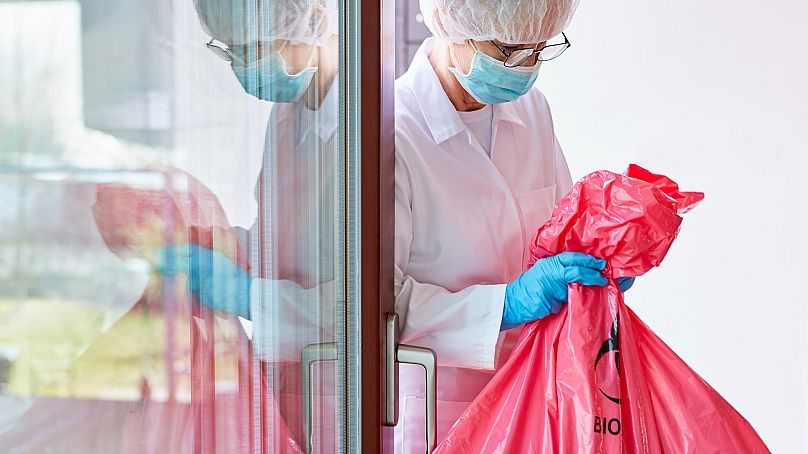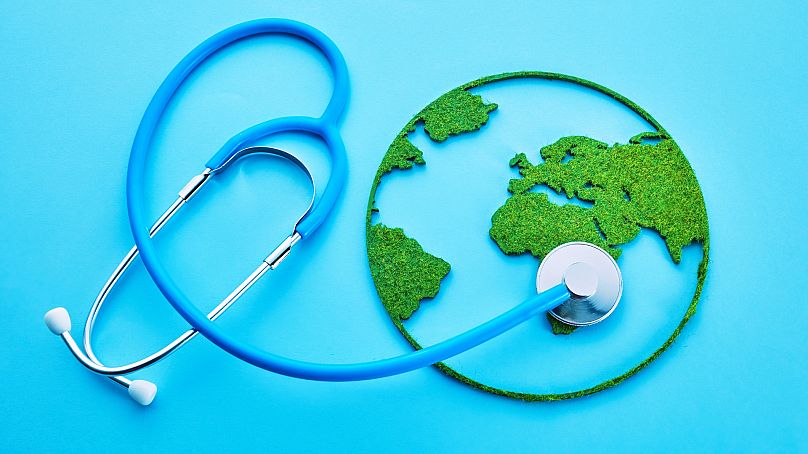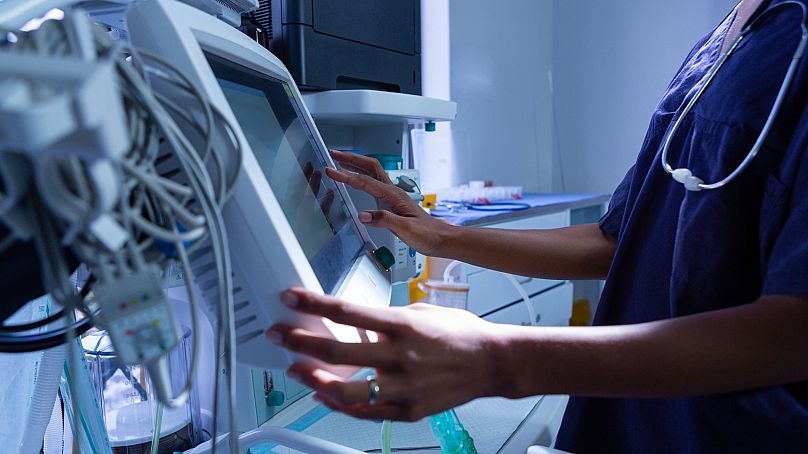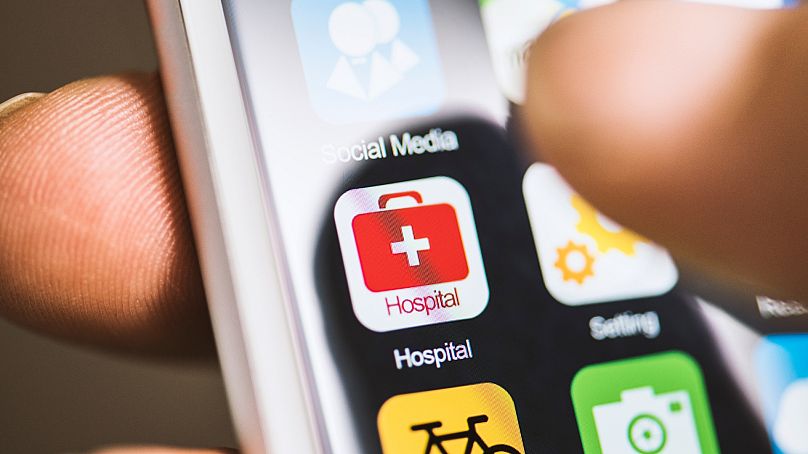How much waste is generated by the healthcare sector in the EU? Can it become more eco-friendly? How can digitalisation make a difference? Watch our latest Euronews Debate to find out.
Healthcare might not be the first industry that springs to mind when you consider the causes of the climate crisis. But globally, an estimated 5 per cent of global emissions come from the healthcare industry.
If the world is to meet the targets set out in the Paris Agreement on climate change, the healthcare sector needs to transition to a more sustainable model and implemented the principles of the circular economy. This means finding new and sustainable ways to use resources and bring about the decarbonisation of the industry.
Many solutions already exist to close the loop and make healthcare more sustainable, with multinationals like Philips working hard to offer innovative solutions such as equipment recycling and repair.
The European Union is leading the way too, with several initiatives following the European Green Deal and its Circular Economy Action Plan (CEAP).
But with healthcare funding in Europe already stretched, can the EU transition to a circular economy without compromising on quality and patient safety?
And as we move towards a more digital future, could finances and resources be saved by making healthcare more digital?
To discuss these questions and more, our expert panel met in the European Parliament in Brussels.
You can watch the entire debate in the video player below:
The panellists were:
* Aurel Ciobanu-Dordea, Director in charge of the Circular Economy in the European Commission's DG ENV
* Robert Metzke, SVP and Global Head of Sustainability at Philips
* MEP Sara Cerdas
* Arianna Gamba, Director of Programmes at Health Care Without Harm Europe
* Jeremy Wilks, Euronews Reporter and debate moderator
How much waste is generated by the healthcare sector in the EU?
According to the World Health Organisation (WHO), high-income countries generate around 0.5kg of hazardous waste per hospital bed, per day.
“The healthcare sector in itself is emitting more CO2 than airlines and shipping lines and we often don’t talk about it," said Robert Metzke, SVP and Global Head of Sustainability at Philips.
While many healthcare products, such as syringes and bandages cannot be reused, there are other areas where changes can be made.
“There is a lot of unnecessary use of single-use items," said Arianna Gamba, Director of Programmes at Health Care Without Harm Europe, "such as single use curtains to separate patients, there's a lot of single-use textiles."
The problem of single-use textiles has been amplified as many hospitals have closed their laundry facilities. This means that if healthcare facilities did wish to return to sterilising and reusing their laundry, it would need to be done offsite.
The COVID-19 pandemic increased the proliferation of single-use items within the industry too, with billions of single-use COVID-19 tests produced globally.
But while the pandemic highlighted the need to reduce waste, how can this be done without reducing standards?
"We need to find ways to better manage the material resources which go into healthcare systems," said Aurel Ciobanu-Dordea, Director in charge of the Circular Economy in the European Commission's DG ENV.
"We need to secure recycling while protecting the hygiene and health of patients, and maybe it is also legitimate to think about the repeated use of some medical devices.”
Can a shift to a circular economy make healthcare more sustainable?
“The business rationale behind embracing circular economy principles is to design out waste," explained Robert Metzke.
"If you look at the waste of materials, we are digging up 100 gigatons of raw materials every year from the earth, less than 10 per cent of that is recycled.”
Refurbishment is often the most sustainable way to upgrade and extend the lifecycle of products, and with this in mind the EU is currently in the proposal stage for a new EcoDesign for Sustainable Products Directive. Under the directive, products will come with a "Digital Product Passport", which will provide information about a products' sustainability.
While Aurel Ciobanu-Dordea said this will have an effect on healthcare, it will not happen immediately. When it does happen though, it will have a direct impact on patient care.
“If we think about repairability and the scarcity of public funds in the health sector, making health items, such as machines, repairable and upgradable, brings the latest developments, in terms of medical science and technology, closer to the consumer at a lower price,” he told the panel.
When it comes to the repairability of medical equipment, Robert Metzke from Philips said that the technology and desire for a circular economy is already there, with machines being designed in a modular way so that components can be replaced.
However, the speed at which the healthcare system adopts new technology is causing a delay in the roll out of more sustainable practices.
“Healthcare is not a frontrunner when it comes to the speed of adopting innovation. If you look at adoption curves, healthcare is chronically slow on that," said Metzke.
"We created telehealth 10 to 15 years ago and doctors and care protocols were just not ready to adopt it and bring it to practice. But with the COVID pandemic they suddenly saw the use of telecare. So sometimes the increasing pressure on the system can also drive faster acceleration and change.”
Can medical equipment be reduced, reprocessed, or recycled instead?
While recycling has a role to play, Metzke was keen to highlight its drawbacks.
“Recycling is the most wasteful thing you can do, what you want to do is start with repair and maintenance.”
In order to combat medical waste, Philips "take back all large scale medical equipment from our customers around the globe.”
Another way of combating waste is stopping its creation in the first place, but reducing packaging waste for single-use medical items has proven to be a complex issue. Medical devices were recently exempted from the 2022 Packaging and Packaging Waste Directive revision, as Ciobanu-Dordea explained.
"Currently there are not enough polymers on the market that can preserve the quality of the packaging." He hopes though, that change will be possible within four to five years.
Another possible method of reducing waste is via reprocessing.
“Reprocessing of medical devices is now allowed in Europe with the medical device regulation, but European countries have to opt in and the countries that do not approve it cannot do it,” said Arianna Gamba.
Reprocessing means that single use items can be sent to third party companies, who then clean and sterilise them before sending them back. These items can then be resused for a certain amount of time, and the process is fully certified to ensure its safety, something that MEP Sara Cerdas believes is vital in keeping healthcare workers on board.
“Health workers are very much aware of the problems, it’s just a matter of giving them the tools and creating awareness that the safety of the patient is not compromised."
Is digitalisation improving sustainability within healthcare?
“One way that we can reduce the footprint of medical materials is through digitalisation," said MEP Sara Cerdas.
"With the European Health Data Space we’re going to be able to reduce the amount of complementary exams for diagnosis. For instance if I do a CT scan in Portugal, it can be used by my doctor here in Belgium. So it will reduce the individual footprint of the patient,” she said.
Virtual resources, digital tools and software may also enable healthcare settings to ‘dematerialize’ too. Innovations such as telehealth, where patients have virtual meetings with doctors will cut down on CO2 emissions from travel, while cloud-based services and efficiency-enhancing software could reduce CO2 emissions from computing and data storage.
“We started digitalisation in Portugal in 2010," said MEP Cerdas. "So at the moment I just show them my electronic prescription and I receive the medicine. So the paper footprint in the NHS in Portugal has been reduced a lot.”
With so much potential for change, how can sustainable healthcare be kept on the agenda as the EU moves towards the 2024 election?
“We should stop discussing sustainability as a standalone topic," said Metzke.
"We cannot talk about the future of healthcare without talking about sustainable healthcare systems. Healthcare is a key priority for everybody, our healthcare systems need to become sustainable.” he said.
